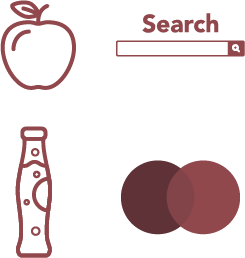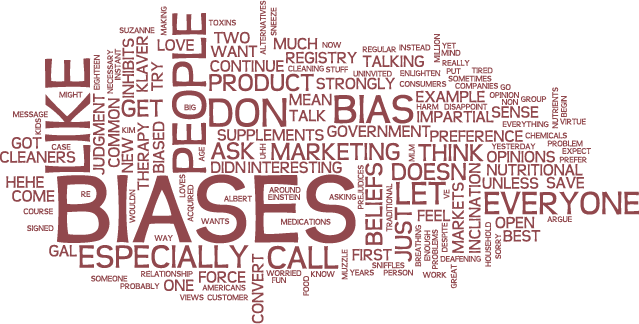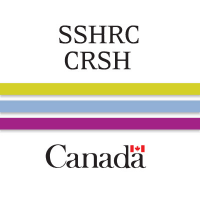When Consumers Meet AI
AI (artificial intelligence) is being rapidly adopted across several domains, including in transportation, health, legal, and financial domains. While AI is promoted to improve efficiency and wellbeing there are significant social and ethical issues associated with this technology (e.g., who is responsible for harm caused by self-driving cars). How do autonomous vehicles affect consumer morality? How willing are consumers to comply with AI recommendations? How much do consumers blame AI agents when things go wrong? What are the perceived mental capabilities of AI agents and robotic products?
Publications
Gill, T. (2021), “Ethical dilemmas are really important to potential adopters of autonomous vehicles,” Ethics and Information Technology. https://link.springer.com/article/10.1007/s10676-021-09605-y.
Gill, T. (2020), “Blame it on the Self-Driving Car. How Autonomous Vehicles can Alter Consumer Morality,” Journal of Consumer Research, Volume 47, Issue 2, August 2020, Pages 272–291, https://doi.org/10.1093/jcr/ucaa018

Consumers and Their Brands
Brands play an important role in how consumers cope with and adapt to the changing environment. Consumers tend to connect with and trust brands that are similar to themselves and convey an image that they inspire to. How do consumers assess self-brand similarity? What are the underlying dimensions of brand image assessment? Which brands gain more from technological innovation?
Selected Publications
Wijnands, F. and Gill, T. (2020), “You’re not Perfect, but you’re still my Favorite.” Brand Affective Congruence as a new Determinant of Self-Brand Congruence.” Journal of Marketing Management, forthcoming. https://www.tandfonline.com/doi/full/10.1080/0267257X.2020.1767679
Gill, T. and Lei, J. (2009). “Convergence in the High-Technology Consumer Markets: Not all Brands Gain Equally by Adding New Functionalities to Products,” Marketing Letters, Vol. 20, 91-103. https://doi.org/10.1007/s11002-008-9050-5
Adoption of Technological Innovations
Current marketplace is characterized by rapid technological advancements and frequent introductions of innovative new products. But not all innovations are readily adopted by consumers. How do product design features influence the adoption of innovative technology? Does it matter if features are primarily utilitarian (functional) versus hedonic (for fun)? Do consumers value multi-functional products? How are consumer adoption decisions influenced by rumors?
Selected Publications
Gill, T., Ma, Z., Zhao, P. and Chen, Y.(. (2021), “How accessories add value to a platform: the role of innovativeness and nonalignability”, European Journal of Marketing, Vol. 55 (4), https://doi.org/10.1108/EJM-07-2019-0627
Sääksjärvi, M., Gill, T., and Hultink, E. J. (2017) “How rumors and preannouncements foster curiosity toward products”, European Journal of Innovation Management, Vol. 20 Issue: 3, 350-371. https://doi.org/10.1108/EJIM-03-2016-0037
Ma, Z., Gill, T. and Jiang, Y. (2015), “Core Versus Peripheral Innovations: The Effect Of Innovation Locus On Consumer Adoption Of New Products,” Journal of Marketing Research, http://dx.doi.org/10.1509/jmr.13.0337 (*first two authors equal contribution).
Gill, T. (2008), “Convergent Products: What Functionalities Add More Value to the Base?,” Journal of Marketing, Vol. 72(2), 46-62. https://doi.org/10.1509%2Fjmkg.72.2.46
Evolutionary Psychology & Marketing
Humans are equipped with evolved psychological mechanisms that helped our early ancestors adapt to their environments (e.g., mechanisms to avoid predators, choose mates, gain status, detect cheaters, etc.). These evolved mechanisms continue to influence consumer decisions in the current environment. For instance, product size is used to signal status, gifts are a means to gain partner approval and birth order affects openness to innovations.
Selected Publications
Panchal, S. and Gill, T. (2019), “When Size Does Matter. Dominance Versus Prestige Based Status Signaling,” Journal of Business Research, in press, https://doi.org/10.1016/j.jbusres.2019.03.047.
Saad, G., Gill, T. and Rajan Nataraajan (2005), “Are Laterborns More Innovative and Non-Conforming Consumers Than Firstborns? A Darwinian Perspective,” Journal of Business Research, Vol. 58, 902-909. https://doi.org/10.1016/j.jbusres.2004.01.001
Saad, G. and Gill, T. (2000), “Applications of Evolutionary Psychology in Marketing,” Psychology & Marketing, Vol. 17(12), 1005-1034. https://doi.org/10.1002/1520-6793(200012)17:12%3C1005::AID-MAR1%3E3.0.CO;2-H

Stereotypes & Biases
People are prone to using stereotypes in making judgments and often rely on biases (shortcuts) to make decisions. These stereotypes and biases affect how consumers evaluate service providers and products. For instance, ethnic stereotypes can influence the perceived competence of service professionals; consumers are resistant to products that are promoted to counter-stereotypical users; and skin tone (light vs. dark) can influence consumer perception of services providers and product endorsers.
Selected Publications
Gill, T., J. Lei, H. J. Kim (2022), “Adding more portion-size options to a menu: A means to nudge consumers to choose larger portions of healthy food items,” Appetite, Vol. 169, 2022, 105830, https://doi.org/10.1016/j.appet.2021.105830
Gill, T. and Lei, J. (2018), “Counter-stereotypical products: Barriers to their adoption and strategies to overcome them,” Psychology & Marketing, Vol. 35: 493-510. https://doi.org/10.1002/mar.21101.
Gill, T., Ranaweera C. & Kim, H.J. (2017), “Ethnic Stereotyping in Service Provision: When do Stereotypes Affect the Performance Expectations and Evaluation of Ethnic Service Providers?” in Journal of Service Theory and Practice, 27(3): 520-546. https://doi.org/10.1108/JSTP-03-2016-0056
Science of Replications
The social sciences have recently been plagued by a “replication crisis”. Namely, the inability to replicate prior established research findings in psychology. Replications are essential to establish the validity and robustness of the social science research. Tripat’s lab is involved in several replication projects; both in psychology (with worldwide collaborators) and in the field of Marketing.
Selected Publications
Bago, B., Kovacs, M., Protzko, J. Gill, t. et al. (2022), “Situational factors shape moral judgements in the trolley dilemma in Eastern, Southern and Western countries in a culturally diverse sample,” Nature Human Behavior, Vol. 6, 880-895. https://doi.org/10.1038/s41562-022-01319-5
Psychological Science Accelerator (2022), “A global experiment on motivating social distancing during the COVID-19 pandemic,” Proceedings of the National Academy of Sciences, 119 (22) e2111091119 https://doi.org/10.1073/pnas.2111091119
Wang, K., Goldenberg, A., … Gill, T. et al. (2021) A multi-country test of brief reappraisal interventions on emotions during the COVID-19 pandemic. Nature Human Behavior 5, 1089–1110 (2021). https://doi.org/10.1038/s41562-021-01173-x
Jones, B.C., …Gill, T. et al. (2021), “To Which World Regions Does the Valence-Dominance Model of Social Perception Apply?,” Nature Human Behavior, 5, 159-69. https://www.nature.com/articles/s41562-020-01007-2
Klein, R. A., .. Gill, T… (187 others).. and B. Nosek (2018), “Many Labs 2: Investigating Variation in Replicability Across Samples and Settings,” Advances in Methods and Practices in Psychological Science, Vol. 1(4): 443–490. https://doi.org/10.1177%2F2515245918810225
Lewis, D. and Gill, T. (2016), “Is There a Mere Categorization Effect in Investment Decisions?,” International Journal of Research in Marketing, Vol. 33, 232-235. https://doi.org/10.1016/j.ijresmar.2016.01.001
Gill, T. and El Gamal, M. (2014), “Does exposure to dogs (cows) increase the preference for Puma (the color white)? Not always,” International Journal of Research in Marketing, 31, 125-126. https://doi.org/10.1016/j.ijresmar.2013.12.002


